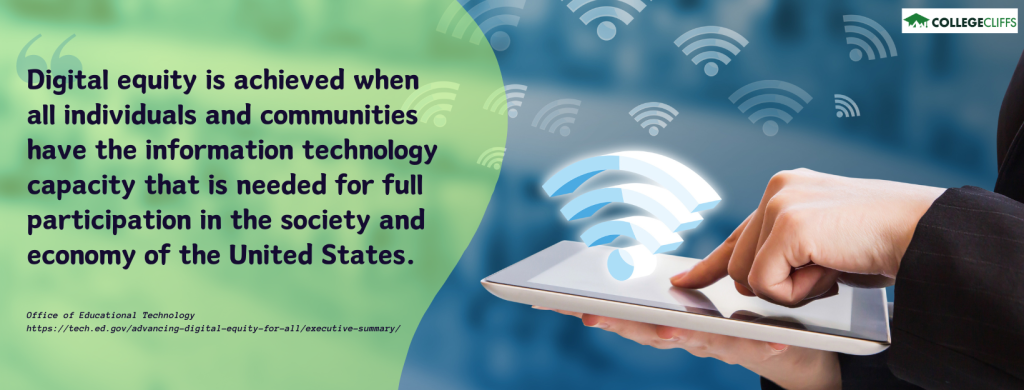5 Facts About Digital Equity Every College Student Should Know
Find your perfect college degree
In this article, we will be covering...
Students revel in the influx of all kinds of digital products that make attending classes, taking notes, completing assignments, doing research, and conducting projects easier than ever before!
On the flip side, digital products are, in fact, a luxury for marginalized people, people with disabilities, people of color, and low-income families. This gap is affecting students and their families who belong in these categories.

In this context, digital equity advocates for equal and consistent access to reliable and useful technology for student success. This concept encompasses technology-related training for students and instructors in increasingly technology-focused learning environments.
Here are 5 facts about digital equity in education that every college student must be aware of:
Digital equity is essential in students’ social-emotional learning.

By providing fast and easy access to academic resources and communication, technology in education is crucial to a student’s social-emotional learning (SEL), which essentially points to a balanced, emotionally healthy, and fulfilling life impacting academic performance.
The digital gap calls for equitable technology integration initiatives.

School leaders and the government are creating solutions in an attempt to bridge the widening digital divide. These efforts include the following:
- Schools across all educational levels are given high-speed broadband access. Most are also provided with digital devices and products, with some implementing the 1:1 model, to ensure all students have access to technology.
- Schools foster partnerships with the private and public sectors to provide students with home access to high-speed internet and capable devices.
- Internet service providers have heeded the Federal Communications Commission’s “Keep Americans Connected Pledge” even after the pandemic has ended.
The Digital Equity Act primarily aims to equip low-income populations with digital skills through training and education.

First proposed by Senator Patty Murray in 2019, the Digital Equity Act also seeks to improve the online accessibility of social services for people with disabilities and give rural communities access to high-quality internet.
A $65 billion budget is set for improving the country’s broadband systems.
The Infrastructure Investment and Jobs Act, which includes the Digital Equity Act, was passed by the US Senate in a 69-30 vote in 2021. The bill calls for the funding of infrastructure projects, including $65 billion for improving the nation’s broadband systems in response to the Federal Communications Commission’s call to keep every American connected to high-speed internet.
Digital Promise, a US Congress- and Department of Education-organized non-profit, advocates for every student’s easy access to tools and technologies for digital learning.

Digital Promise, also known as the National Center for Research in Advanced Information and Digital Technologies, is a nonprofit organization initially organized by the US Congress as part of the Higher Education Opportunity Act re-authorization in 2008.
Digital Promise ensures that all students can easily access the resources for digital learning in culturally responsible learning environments and through multiple dimensions of access.
Academic institutions and the private sector are helping bridge the digital divide.

Comcast launched the Affordable Connectivity Program (ACP). The largest American multinational telecommunications and media conglomerate partners with schools to provide students with reliable internet at home and in classrooms.
California State University has invested millions of dollars to ensure students get access to the necessary digital equipment and broadband services. CSU distributed over 21,000 tablets and laptops for college students and 10,000 mobile hotspots to students.

